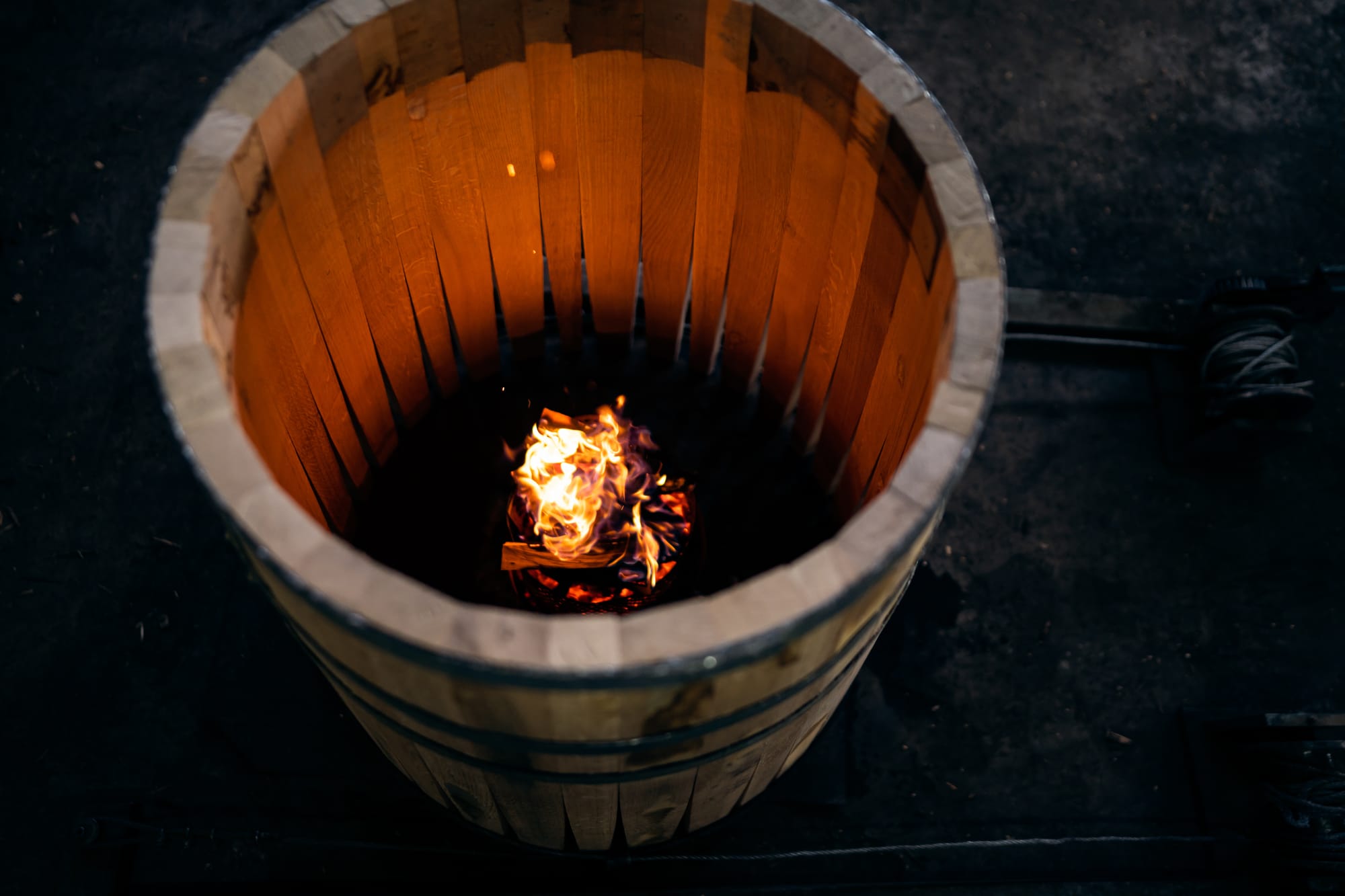"Toasting" and "charring" oak barrels

Toasting and charring are two common techniques used in the production of barrels for aging spirits, such as wine or whiskey.
Toasting involves applying heat to the inside of the barrel for a short period of time, usually a few minutes. This heat causes the wood's natural sugars to caramelize, producing flavors such as vanilla, caramel, and toasted bread. Toasted barrels are typically used for lighter spirits, such as white wine, rum, or tequila, where the goal is to enhance the spirit's natural flavors rather than overpower them.
Charring, on the other hand, involves burning the inside of the barrel for a longer period of time, usually around 30 seconds to a minute. This process creates a layer of charred wood on the inside of the barrel, which imparts smoky and charcoal-like flavors to the aging spirit. Charring is typically used for darker spirits, such as bourbon or whiskey, where the smoky flavor is an important part of the spirit's character.
Overall, the choice between toasting and charring depends on the desired flavor profile of the spirit being aged. Toasting is generally used for lighter spirits, while charring is used for darker, more robust spirits. Some distillers may also choose to use a combination of both techniques to achieve a more complex flavor profile.


